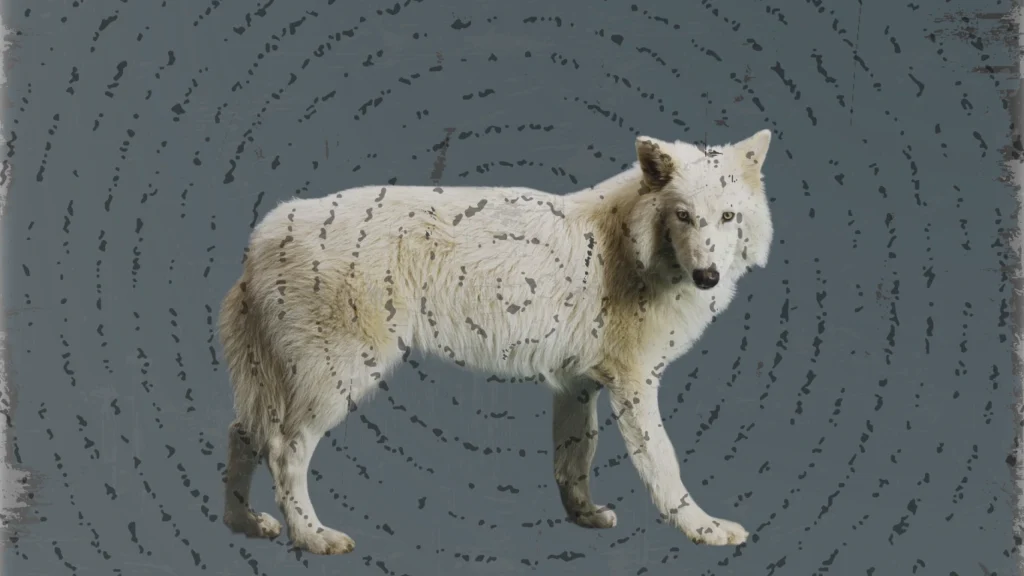
Direwolves—massive, powerful creatures that once roamed North and South America—are perhaps one of the most famous extinct species of the Pleistocene epoch. Known for their intimidating size, strength, and unique hunting abilities, they were dominant predators in their time.
Though long extinct—vanishing around 13,000 years ago due to climate change and prey scarcity—scientists today are exploring whether it’s possible to breed direwolves traits back into existence through modern genetic techniques.
In a stunning twist of scientific ingenuity, researchers have taken the first steps toward resurrecting the dire wolf, or at least a creature with many of its traits. Thanks to cutting-edge gene editing techniques, scientists from Colossal Biosciences have started experimenting with modern gray wolves to recreate the characteristics of these ancient predators.
The goal is not merely to clone the past, but to breed dire wolves traits into a new lineage—one that mirrors the ancient beast in form and function. But are they truly bringing back the direwolf as we imagine it, or simply creating a new breed of wolf with direwolf-like features?
What Are Dire Wolves?
The dire wolf (Aenocyon dirus) was not just a larger version of the wolves we know today; it was an entirely different species. These creatures existed during the Ice Age, with their presence spanning from 250,000 to 13,000 years ago. They were about 25% larger than modern gray wolves, with robust jaws and teeth designed to tackle prey such as bison, horses, and even large camels.
Their extinction marked the end of an era for North and South America, yet their legacy has lived on in popular culture, often portrayed as mythical beasts. Fossil evidence from the La Brea Tar Pits in California has provided significant insight into their physical characteristics and behavioral patterns. However, the resurrection of the direwolf is no longer just a fantasy—it’s becoming a reality through the advances in genetic science.
The Efforts to Breed Direwolves: A New Chapter in Genetic Engineering
The groundbreaking research into breeding direwolves was set in motion by the team at Colossal Biosciences. Using genetic engineering, the scientists embarked on a project that blends ancient DNA with modern wolves. Rather than bringing back the extinct species in its entirety, the team edits the genome of gray wolves (Canis lupus) to incorporate certain traits of the extinct direwolf. This revolutionary work has sparked a debate over the ethics and scientific implications of de-extinction.
The first results of this project became evident in 2024 when three pups, named Romulus, Remus, and Khaleesi, were born with distinct direwolf-like features. These pups have been genetically modified with DNA from direwolves, but they aren’t exact replicas. Instead, they are hybrids—modern wolves with a stronger resemblance to their Ice Age ancestors.
How Are the New Wolves Different from Gray Wolves?
While the resulting wolves are not direct clones of the dire wolf pup, they exhibit several striking characteristics. For example, the new wolves have white fur, a bushy tail, and a mane-like neck of fur—features that closely resemble the direwolves of the Pleistocene.
At just six months old, the pups, Romulus and Remus, have already grown to nearly four feet in length and weigh 80 pounds. Experts predict that they could grow as large as six feet long and weigh up to 150 pounds, resembling the size and strength of the biggest wolf ever recorded. This remarkable growth highlights the possibility that genetic editing may allow these creatures to regain the imposing size that made direwolves so formidable in the wild.
Despite these advancements, the current direwolf-like wolves are housed in a controlled 2,000-acre preserve in the northern United States, where they live away from the dangers and unpredictability of the wild.
The Science Behind the Resurrection Project: How Does Gene Editing Work?
The project’s core method relies on gene editing, a technology that allows scientists to make precise changes to an organism’s genetic material. In this case, the scientists at Colossal Biosciences used DNA extracted from a 13,000-year-old tooth and a 72,000-year-old skull to identify the genes responsible for the defining features of the direwolf. By studying these ancient DNA sequences, they were able to match and edit about 20 genes in the DNA of modern gray wolves.
The resulting genetic modifications resulted in changes that enhanced traits such as larger size, white fur, and other direwolf characteristics. However, it’s important to note that these wolves are still genetically closer to gray wolves than to the extinct direwolves. As such, they may not fully replicate the behavior or ecosystem role of their Ice Age predecessors.
The Ethical and Conservation Implications of De-Extinction
While the resurrection of the direwolf raises exciting possibilities for de-extinction, it also brings a host of ethical questions. Should we recreate extinct species, or is this scientific overreach? The debate is not just about the technical feasibility but also the ecological consequences. Some scientists argue that these genetically edited wolves might play a crucial role in conservation efforts, particularly for endangered species such as the red wolf.
Through genetic research, scientists may be able to apply similar methods to help endangered species. In fact, Colossal Biosciences has plans to collaborate with Native American tribes, including the Mandan, Hidatsa, and Arikara Nation, for future projects. The potential benefits of breeding direwolves could extend beyond simple curiosity and into real-world conservation initiatives.
At the same time, critics warn that recreating extinct species in a controlled environment might result in unforeseen ecological consequences. The behavior of these animals in the wild is still a mystery, and it remains unclear whether they will successfully integrate into modern ecosystems.
Can We Expect to See More Direwolf-like Creatures?
The arrival of Romulus, Remus, and Khaleesi represents just the beginning of what could become a growing trend in de-extinction. Colossal Biosciences is already working on other species, such as the woolly mammoth, which may soon also be partially resurrected through similar genetic techniques.
As researchers continue to refine their methods, we may see more animals with direwolf traits, though the debate on whether they can truly be considered “direwolves” will continue to persist.
Conclusion: What Lies Ahead for the Direwolf Project?
The ambitious efforts to recreate direwolves are a fascinating intersection of genetics, ethics, and evolutionary biology. Though the wolves bred by scientists at Colossal Biosciences may not be exact replicas of the original direwolves, they serve as a glimpse into a world where ancient species could be reintroduced into modern ecosystems. With the breeding of direwolves and the ongoing exploration of their potential conservation benefits, we may see an entirely new era of wildlife management in the future.
Whether this project will be successful in restoring these iconic animals to the wild remains to be seen. But one thing is for sure—the resurrection of the direwolf is far more than just science fiction. It’s becoming a reality.
Frequently Asked Questions
What is a dire wolf?
A dire wolf (Aenocyon dirus) is an extinct species of wolf that lived during the Ice Age. It was larger than modern gray wolves and hunted large prey like bison and horses.
Are the recreated wolves the same as direwolves?
No, the recreated wolves are genetically edited gray wolves that possess certain traits of the dire wolf, such as larger size, white fur, and bushy tails. They are not exact replicas.
What is the biggest wolf ever recorded?
The largest recorded gray wolf weighed around 175 pounds and measured over 6 feet long. However, the recreated dire wolves are predicted to grow up to 150 pounds and 6 feet long.
How were the dire wolves recreated?
Scientists edited the DNA of gray wolves using ancient DNA from direwolf fossils, modifying around 20 genes to replicate certain traits of the extinct species.
What do these wolves look like?
The new wolves have white fur, bushy tails, and a mane-like neck of fur, similar to the features of the extinct dire wolf.
What are the ethical concerns about recreating extinct animals?
Critics argue that bringing back extinct species might lead to ecological imbalances and that these animals may not have the same behavioral traits in the wild. The ethical concerns revolve around whether it’s right to play with nature.

